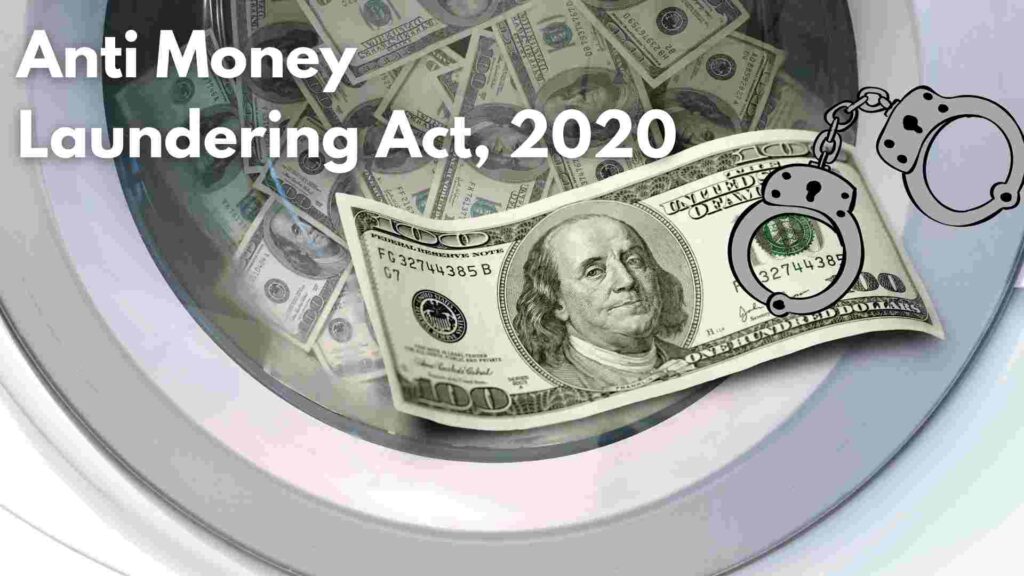Combating money laundering in the crypto world is not a piece of cake yet, regulators and agencies have been researching continuously to find solutions to this new challenge like making KYC compulsory. But, what is money laundering and what are some anti money laundering solutions?
Let’s have a look at some quick detailed explanations!
Definition Of Money Laundering
One of the most common crypto crimes, money laundering refers to the process of obtaining & moving illegal funds obtained through illicit activity to hide their source and establish their authority. Since the beginning of time, the flow of money has been the foundation of our economies and enterprises.
Hence, the main goal of money laundering rests in integrating the funds of illegal origin into a legitimate financial system.
Suggested Read: Binance Plea Deal Of 2023
3 Stages Of Money Laundering
The money laundering stages operating systematically are as follows –
Stage 1: Placement
Placement refers to the introduction of illegal, dirty money into the legitimate financial system. Large amounts of cash are broken up into small compartments to be either deposited directly into bank accounts or via other options like cheques.

Various strategies and techniques are used by criminals to pass the first stage of money laundering. Here are some of them-
- Mixing services allow the blending of illegally obtained cryptocurrency with legitimate digital assets, complicating the ability of people of law to trace the origins of illegal coins.
- Peer-to-peer exchanges facilitate direct transactions between users especially when conducted face-to-face, thus, eliminating the need for centralized platforms and enhancing anonymity.
- Tumbling involves sending cryptocurrency to a service that returns an equivalent amount minus a fee, sourced from a diverse range of unrelated transactions.
Stage 2: Layering
The laundering stage involves moving the money through various financial transactions in a way that it difficult to take note of its source. Used alongside traditional financial systems, laundering makes use of a mixing service, which divides and pools the money from multiple users, making it harder to link the funds to a specific individual or transaction.

Here are some methods of layering commonly in practice-
- Money launderers confuse the path of unlawful cash by using several transactions across many cryptocurrencies, making it more difficult to determine the funds’ source and destination.
- Criminals use cryptocurrencies to carry out cross-border transactions taking benefit of the weak rules, escaping regular banking examinations, and transferring money secretly.
- Privacy coins and anonymous wallets are used by money launderers to carry out transactions that are impossible to trace.
- Further, algorithmic trading and market manipulation also create chances for money laundering.
Stage 3: Integration
The last and final stage is the integration of funds into the main financial system. To ensure the usage of illegal funds, without being caught, the criminals also invest in luxury assets, business startups, or even real estate. When it comes to cryptocurrencies, this can include paying for products and services with layered funds or converting them back into physical currency.

The integration money laundering stage can take many forms like making use of false workers act as a means of retrieving the funds. Cryptocurrency that has been laundered is used to buy expensive goods like fine vehicles or artwork, which are then sold for accepted money, thus ensuring integration.
Now, let’s have a look at some of the most shocking and eye-opening crypto money laundering cases.
Biggest Money Laundering Cases Of The Crypto Industry
Here is a list of the top money laundering schemes that have affected the crypto market as a booming industry-
Morgan Stanley Money Laundering Case
Morgan Stanley, a big financial firm has come into the eyes of the law and SEC for illegal activities like money laundering. The investigation is all about checking the clients of the firm, the source of its finances, and the movement of funds within and outside the country. As an answer to the probe, the Executive Chairman of Morgan, James Gorman has said that the company invests in funds in technology and AI for advancement purposes.
Tornado Cash Developer Case
Tornado cash is no less than a real “tornado”, helping its users make the cryptos untraceable and also helping them to conceal the location of money linked to their illegal actions and to launder money that has been stolen. A facilitator of over $ 1 billion in money laundering cases, the Tornado Cash developer Alexey Pertsev was accused of laundering funds over $ 1.2 billion in March 2024.
Hacking Of Ronin Network
Another historical case is of Ronin Bridge which is a blockchain network developed especially for gaming purposes. In March 2022, the Ronin Network was hacked for about $600M in USDC stablecoins and 173,600 Ether Tokens. The stolen money was transferred to cryptocurrency wallets and then combined with Tornado Cash in batches. Then, the hackers converted ETH to BTC, which was further mixed in batches.
The Longest Bitcoin Fog
The longest case of money laundering in the crypto niche, the Bitcoin Fog had a timespan of 10 years from 2011 to 2021. Over 1.2 million Bitcoins, valued at $400 million at the time of the transactions, are reportedly believed to have been moved by Bitcoin Fog during that period. Roman Sterlingov, a dual Swedish-Russian national, was found guilty in March 2024 by a U.S. court of running Bitcoin Fog.
“Roman Sterlingov operated Bitcoin Fog, a cryptocurrency ‘mixing’ service that allowed criminals to launder hundreds of millions of dollars in illicit funds from darknet marketplaces. The defendant and his customers believed they could use Bitcoin Fog to conceal these illicit transactions.”, said Acting Assistant Attorney General Nicole M. Argentieri of the Justice Department’s Criminal Division.
Samourai Wallet Case of 2024
Charged with a money laundering offense in April 2024, the Samourai Wallet had a special feature called “Whirlpool” that assisted in money laundering activities. With the help of this feature, the illegal fund path was hidden by organizing them into batches of cryptocurrency trades. According to the DoJ, over $2 billion in illicit transactions and over $100 million in criminal earnings were laundered through the usage of Samourai Wallet.
And the list is almost never-ending!
Suggested Read: Binance CEO Pleads Guilty, Pays 4.3 Billion In Settlements
Anti-Money Laundering Act Of 2020
In an attempt to find concrete anti money laundering solutions, the law agencies came up with an act in 2020. Let’s have a look at it for a better understanding-
- The Anti Money Laundering Act of 2020 aims to modernize the working of law and financial agencies in combating problems related to finance. As suggested by the name, the main focus of this act is combating money laundering activities in the financial system.
- The Anti-Money Laundering Act allows banks and other financial institutions to share information with their foreign subsidiaries, partners, and affiliates, including cryptocurrency companies, about anti-money laundering and Bank Secrecy Act rules.
- Passed on January 1, 2021, the AMLA not only helps detect but also supervises the reporting of illegal activities associated with money laundering and terrorist financing.
Key Provisions Of AMLA, 2020
- It expands the scope of financial institutions under the BSA to include companies in other areas, such as bitcoin services.
- Businesses are required to notify FinCEN of their beneficial owners.
- It alters the procedure for reporting suspicious activity reports (SARs) that are not sophisticated.
- It enhances the current safeguards for whistleblowers.
- It makes it illegal to withhold some information from financial institutions or to falsify it, and it stiffens the penalty for breaking the BSA.
- It expands the search authority for foreign bank records granted to the Departments of Justice and Treasury.
- It sets new, significant national priorities for AML/CFT compliance.
Hope you understood the gist of it! 🙂
Tips To Prevent Money Laundering

Now, is the time to have a look at some quick tips to at least reduce the cases of money laundering, if not eliminate them completely.
- Implement robust Know Your Customer (KYC) procedures.
- Conduct thorough customer due diligence (CDD) checks.
- Monitor transactions for doubtful activities.
- Educate staff on anti-money laundering (AML) policies & procedures.
- Maintain accurate and up-to-date records of transactions and client information.
- Use advanced transaction monitoring tools & technologies.
Frequently Asked Questions
Q: What is money laundering with example?
A: In simple terms, money laundering in the crypto market refers to the shifting of illegal funds into the legitimate financial system, without coming into the eyes of law. One example of this could be the famous Morgan Stanley Money Laundering Case.
Q: Are governments across the world bullying crypto as a currency?
A: Crypto markets vs The Governments have always been a scene in the crypto niche. However, even after facing an unlimited number of scrutinies by the government, crypto’s growth as a market is unstoppable.
Q: Is money laundering a felony?
A: Yes, money laundering is a felony.
If you found this blog informative, then head on to ReadingCrypto – a mini crypto world where every update and guide is all about the crypto market. Read & learn while you invest!
Disclaimer: This post is intended solely for informational purposes and should not be taken as legal, tax, investment, financial, or any other form of advice. Although all the information provided is true to the best of our knowledge, it is advisable to research well before making any kind of investments or decisions in general. The team of ReadingCrypto bears no responsibility in the event of any adverse outcomes.




